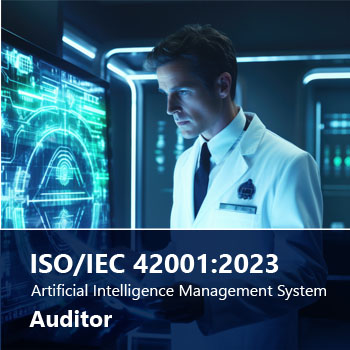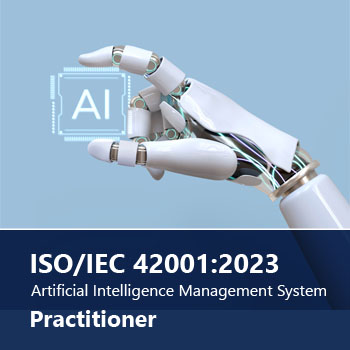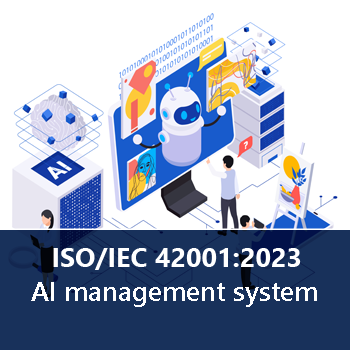What is an AI system impact assessment and why does it matter?

What is an AI system impact assessment and why does it matter?
As artificial intelligence becomes increasingly embedded in our daily lives—from healthcare and finance to justice systems and education—a key question arises:
What are the consequences of deploying and using AI?
An AI system impact assessment is a structured approach to understanding the potential effects—both positive and negative—of AI systems on people, communities, and society as a whole.
In this blog post, we’ll explore what AI system impact assessments are, why they are necessary, and how organizations can carry them out effectively.
What Is an AI System impact assessment?
The AI system impact assessment is a tool used to evaluate the potential consequences of an AI system across its entire life cycle—from development to deployment and decommissioning.
This assessment focuses on how AI might affect:
- Individuals and specific groups (e.g. children, elderly, or marginalized communities)
- Society at large (e.g. economic structures, cultural norms, political stability)
- Fundamental rights and freedoms (e.g. privacy, fairness, equality)
According to ISO/IEC 42001 the international standard for AI management systems, organizations that develop or use AI should evaluate their systems' potential impacts—both positive and negative—based on the intended use, complexity, data sensitivity, and deployment context.
Why is an AI system impact assessment necessary?
AI systems can generate significant and sometimes unintended consequences. Without proper oversight, AI may:
- Deny someone access to a loan due to biased training data
- Misdiagnose a patient because of flawed algorithmic logic
- Influence political outcomes through misinformation or deepfakes
- Harm the environment by consuming large amounts of energy
Performing a thorough impact assessment helps organizations:
- ✅ Identify and mitigate risks early in the design process
- ✅ Protect human rights, especially for vulnerable or underrepresented groups
- ✅ Build trust with customers, users, and regulatory bodies
- ✅ Ensure compliance with international standards and legal requirements
Real-World Examples of AI Impacts
Let’s look at some real-life scenarios that highlight the importance of AI system impact assessments:
Healthcare: An AI system used to prioritize organ transplants was found to systematically disadvantage patients from rural areas. An impact assessment could have flagged this inequity before the AI system was deployed deployment.
Employment: AI tools used in hiring were shown to reject candidates from certain demographics due to biased historical data. Early assessment could have helped detect and correct the bias.
Environment: Training large AI models (e.g. generative language models) consumes vast amounts of energy. Assessing this environmental impact enables organizations to align with sustainability goals.
Public Safety: Autonomous vehicles rely on AI to make split-second decisions. A proper impact assessment can evaluate potential risks and ensure the implementation of appropriate safety measures.
What does the impact assessment process involve?
A comprehensive AI system impact assessment typically includes the following steps:
- Identification – What are the potential sources of harm?
- Analysis – How likely are these harms, and what are their potential consequences?
- Evaluation – Are the risks acceptable? What trade-offs exist?
- Treatment – What measures can be taken to mitigate or eliminate the risks?
- Documentation and Communication – How are the findings recorded and communicated to relevant stakeholders?
Key factors to consider:
- The criticality and context of the AI system
- The complexity and level of automation
- The sensitivity of the data being processed
- Potential misuse or unintended use
- The role of human oversight and intervention mechanisms
Organizations should revisit and update the impact assessment throughout the AI system’s life cycle, especially after significant updates or changes in use.
Societal and ethical considerations
While AI system impact assessments focus on individuals and specific groups, they must also consider wider societal impacts, such as:
- Economic equity (e.g. access to financial services, jobs, and credit)
- National security (e.g. the spread of misinformation or surveillance risks)
- Cultural values (e.g. avoiding reinforcement of harmful stereotypes or biases)
By addressing these broader concerns, organizations can help ensure that AI systems contribute to a fairer, safer, and more inclusive society.
Assessing negative and positive impacts
Although impact assessments often emphasize potential risks and harms, ISO/IEC 42001 also encourages organizations to evaluate the positive impacts of AI systems.
There are countless examples of how AI can benefit individuals and society, including:
- Healthcare: Enhancing early diagnosis of diseases through medical imaging analysis
- Education: Offering personalized learning experiences tailored to individual student needs
- Energy and Environment: Optimizing building energy use and reducing emissions
- Accessibility: Helping individuals with disabilities navigate the physical and digital world more effectively
Evaluating both risks and benefits helps organizations make more balanced, ethical decisions about AI development and deployment.
Final thoughts
Performing an AI system impact assessment is not just a compliance checkbox—it’s a strategic and ethical imperative. As regulatory frameworks and public expectations evolve, organizations that adopt responsible AI practices will be better equipped to innovate sustainably and earn long-term trust.
Whether you’re a startup deploying a chatbot or a multinational launching a medical AI platform, evaluating your system’s impact is essential to ensuring it works for people—not against them.
If you're interested in responsible AI, check out our online course on ISO/IEC 42001, the international standard for AI management systems.
For those already familiar with ISO/IEC 42001, we also offer affordable and transparent certification programs for:
Let’s build better AI—together.


